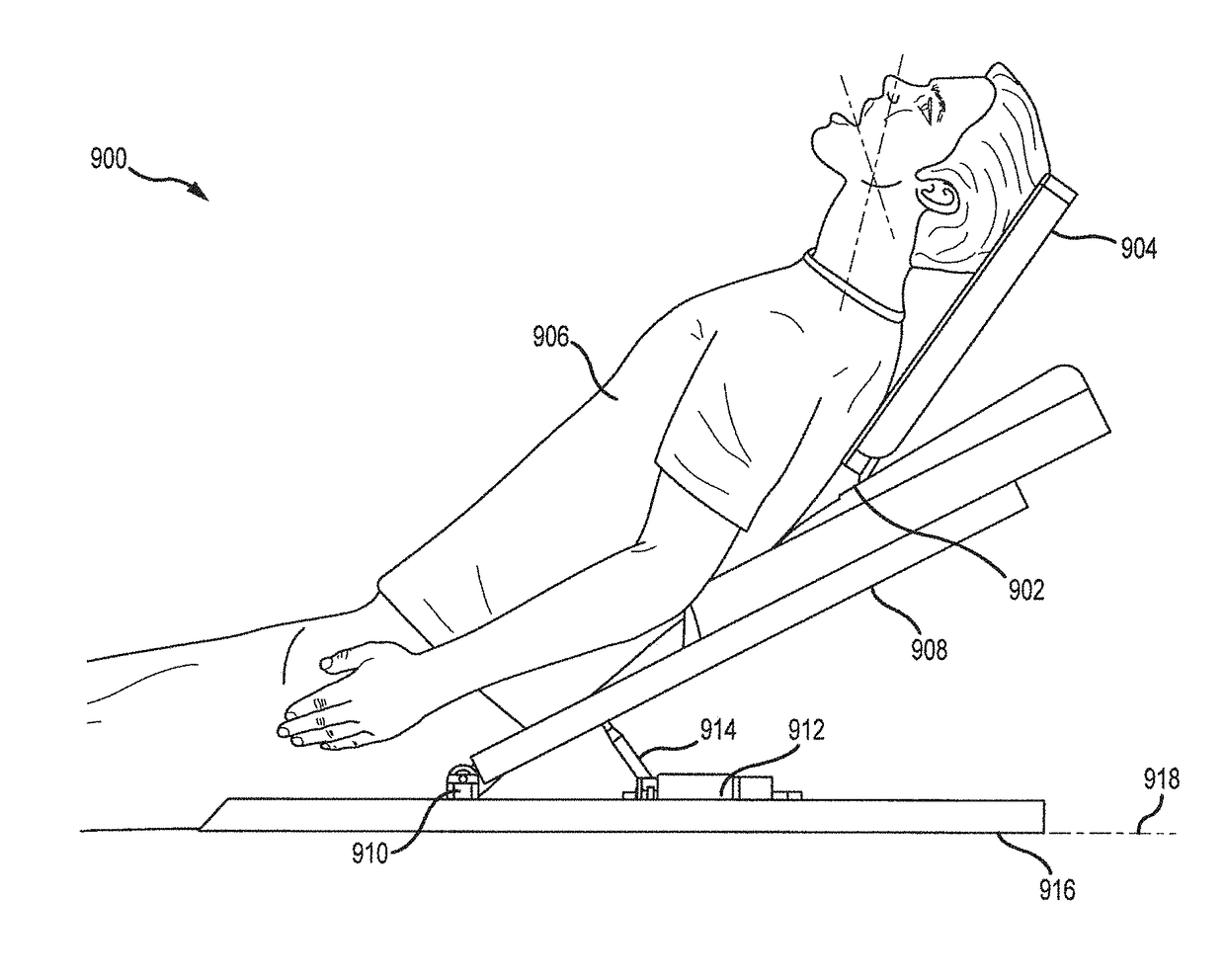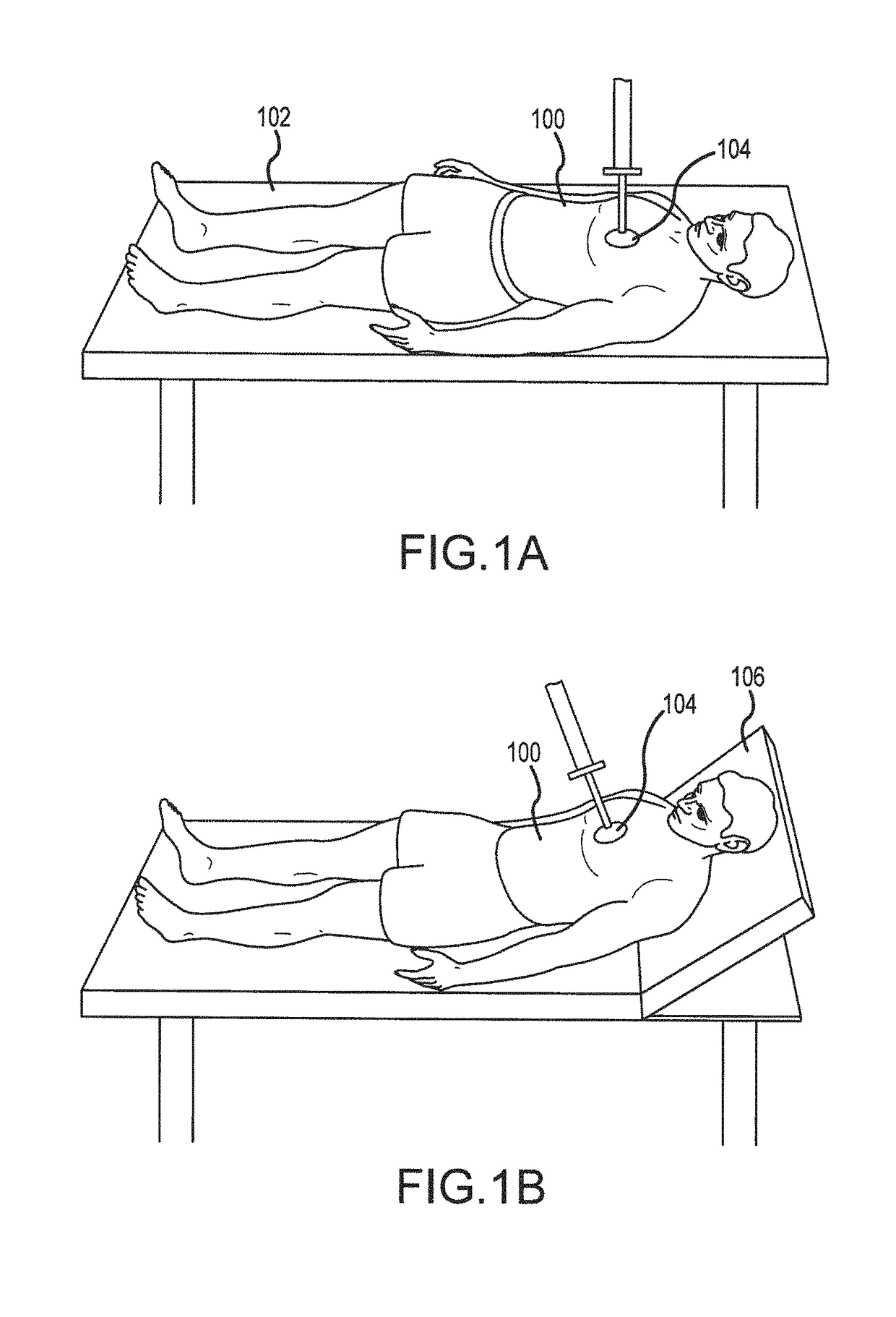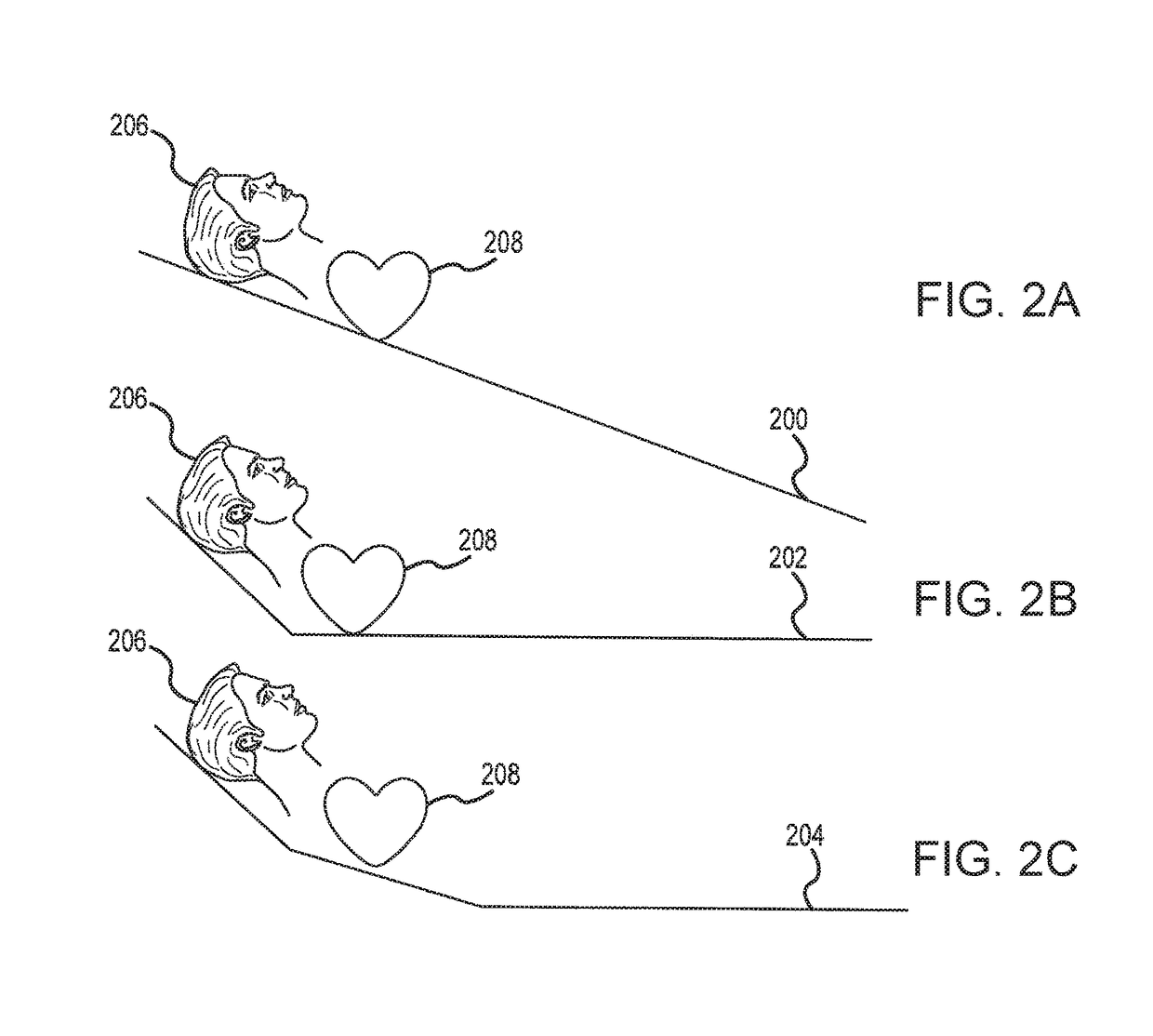Systems and methods for head up cardiopulmonary resuscitation
a cardiopulmonary resuscitation and head-up technology, applied in the field of systems and methods for head-up cardiopulmonary resuscitation, can solve the problems of lowering right atrial pressure, and increasing cerebral perfusion pressure, so as to reduce pulmonary vascular resistance, reduce cerebral output, and reduce the effect of systolic blood pressur
- Summary
- Abstract
- Description
- Claims
- Application Information
AI Technical Summary
Benefits of technology
Problems solved by technology
Method used
Image
Examples
example
[0138
[0139]An experiment was performed to determine whether cerebral and coronary perfusion pressures will remain elevated over 20 minutes of CPR with the head elevated at 15 cm and the thorax elevated at 4 cm compared with the supine position. A trial using female farm pigs was performed, modeling prolonged CPR for head-up versus head flat during both C-CPR and ACD+ITD CPR. A porcine model was used and focus was placed primarily on observing the impact of the position of the head on cerebral perfusion pressure and ICP.
[0140]Approval for the study was obtained from the Institutional Animal Care Committee of the Minneapolis Medical Research Foundation, the research foundation associated with Hennepin County Medical Center in Minneapolis, Minn. Animal care was compliant with the National Research Council's 1996 Guidelines for the Care and Use of Laboratory Animals, and a certified and licensed veterinarian assured protocol performance was in compliance with these guidelines. This rese...
PUM
 Login to View More
Login to View More Abstract
Description
Claims
Application Information
 Login to View More
Login to View More - R&D
- Intellectual Property
- Life Sciences
- Materials
- Tech Scout
- Unparalleled Data Quality
- Higher Quality Content
- 60% Fewer Hallucinations
Browse by: Latest US Patents, China's latest patents, Technical Efficacy Thesaurus, Application Domain, Technology Topic, Popular Technical Reports.
© 2025 PatSnap. All rights reserved.Legal|Privacy policy|Modern Slavery Act Transparency Statement|Sitemap|About US| Contact US: help@patsnap.com



